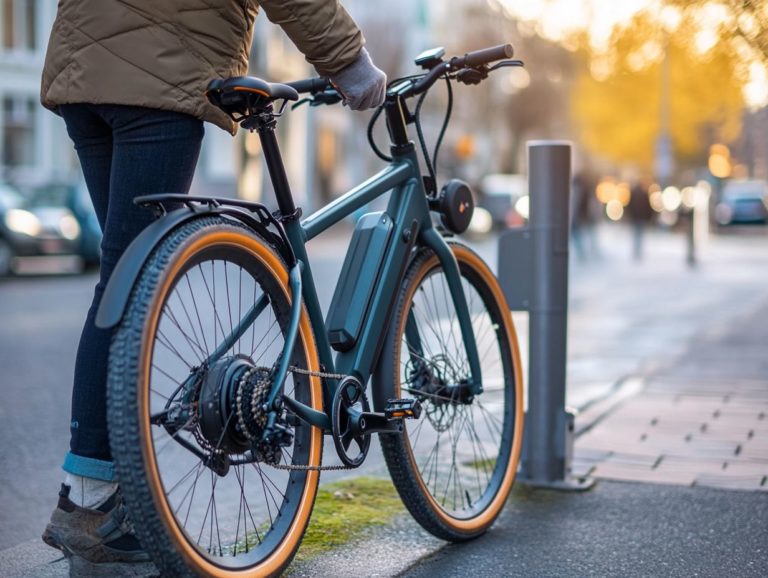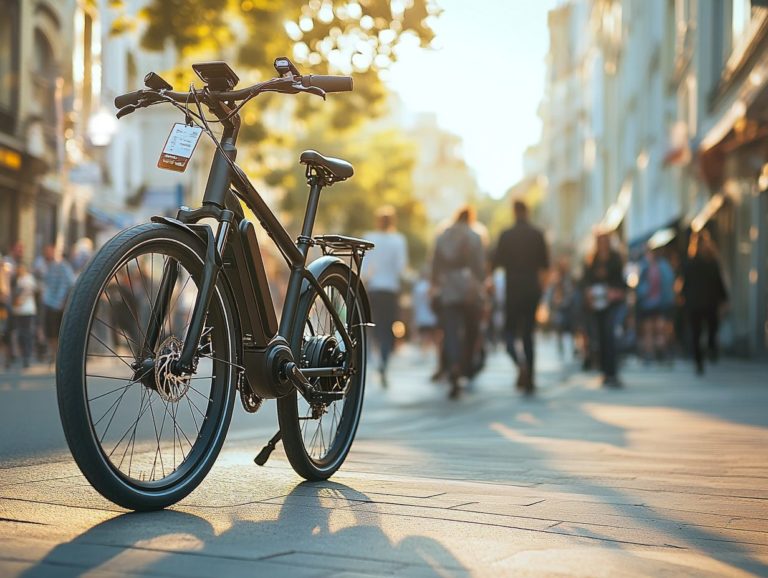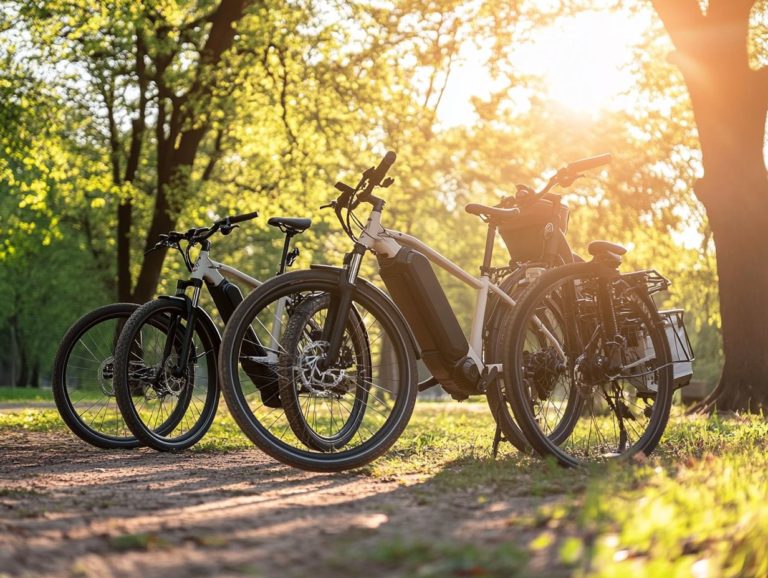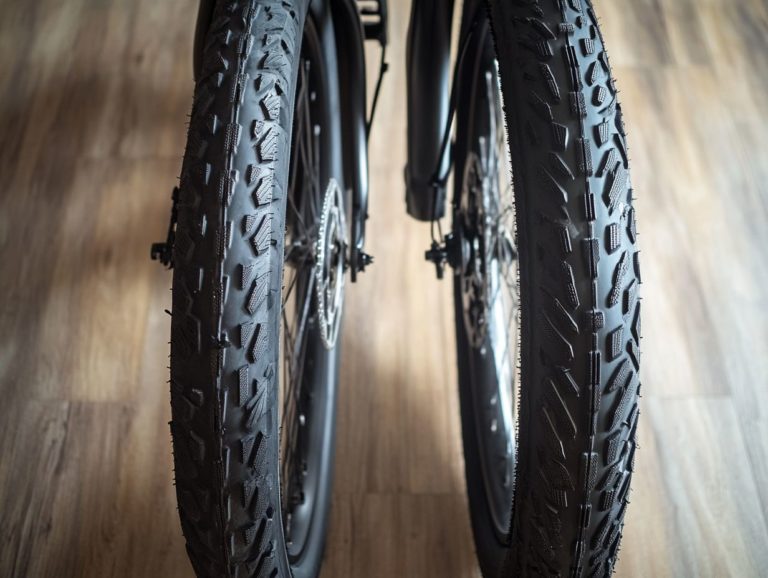How Do I Know If My E-Bike Needs Repairs?
Electric bikes have revolutionized the way you commute and explore, blending convenience with a dash of excitement. However, like any vehicle, they require regular maintenance for optimal operation, particularly with e-bikes.
This article delves into the essential aspects of e-bike upkeep, helping you spot when repairs are needed and identify common issues that may arise. You ll also discover whether to take a DIY approach for repairs or call in the professionals, along with preventive strategies to maintain your e-bike in pristine condition.
By the end, you ll have a comprehensive guide to ensure your rides are consistently enjoyable, enhancing bike performance and keeping you free from hassle.
Contents
Key Takeaways:
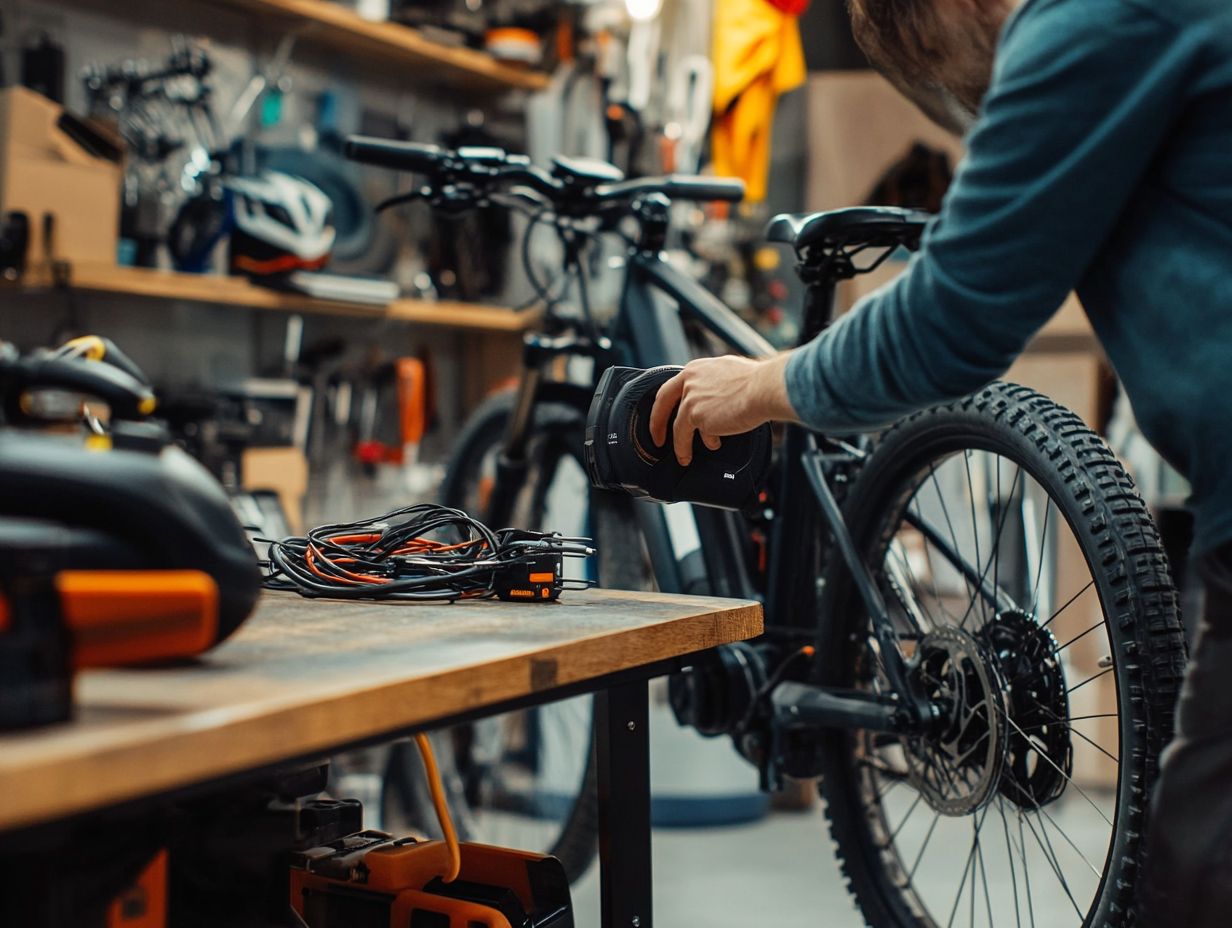
- Regular maintenance is crucial to keep your electric bikes in top condition and prevent costly repairs in the long run.
- Conduct a visual inspection regularly and look out for common warning signs such as unusual noises, difficulty in pedaling, and braking capability issues to determine if your e-bike needs repairs.
- While some minor repairs can be tackled by yourself, it’s best to seek professional help for more complex issues to ensure your e-bike is repaired correctly and safely.
Understanding E-Bike Maintenance
Understanding e-bike maintenance is crucial for maximizing the performance and longevity of your electric bike, especially when it comes to critical aspects like battery care.
Effectively managing the rechargeable batteries used in most e-bikes is key. A thorough maintenance schedule not only keeps your e-bike in pristine condition but also ensures that all electric components, such as the Shimano EP8 motor and devices that help measure how much force you’re applying while pedaling, are working at their best. To learn more about this process, check out how to perform a comprehensive electric bicycle check-up, giving you a seamless riding experience.
This guide gives you vital tips to keep your e-bike running smoothly, highlights common e-bike mistakes, and provides maintenance tips that will help you steer clear of costly repairs in the future, including common electric bicycle issues and how to fix them.
Importance of Regular Maintenance
Regular maintenance is essential for ensuring your bike performs at its best, especially when it comes to electric bikes. Components like the rechargeable batteries used in most e-bikes need consistent care to prevent common e-bike errors and extend their lifespan.
A structured maintenance schedule boosts your bike’s functionality and significantly reduces the risk of costly repairs in the future. By routinely checking electrical connections, ensuring that wiring is free from damage, and monitoring battery health, you can proactively mitigate potential issues. For a comprehensive guide, learn how to inspect your electric bicycle before riding.
Seasonal maintenance is crucial. During the winter months, it’s vital to keep your battery warm and charged. In the summer, focus on avoiding overheating. To ensure optimal performance, refer to what you need to know about e-bike maintenance. Failing to adhere to these essential practices can lead to diminished battery efficiency and longer downtimes, ultimately disrupting your riding experience.
Signs that Your E-Bike Needs Repairs
Recognizing the signs that your e-bike requires repairs is crucial for preserving its efficiency and safety. Issues like battery errors and electrical problems can severely impact your riding experience if you don t address them promptly.
Visual Inspection and Common Warning Signs
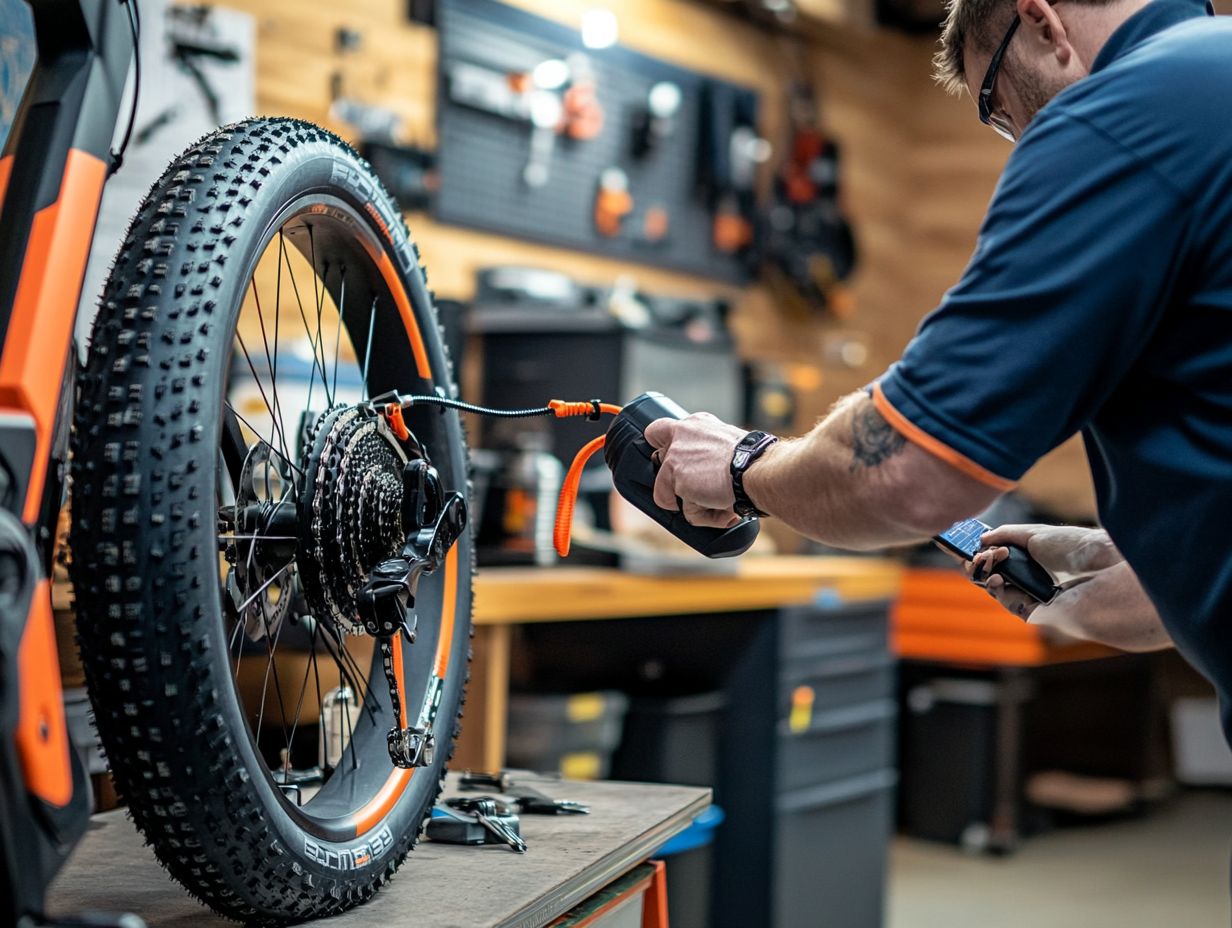
Conducting a thorough visual inspection of your electric bike is essential for identifying common warning signs. Look out for issues like corrosion or malfunctioning components, such as the torque sensor and speed sensor, which are vital for optimal performance.
Start by examining the battery terminals for any signs of wear or corrosion; these can seriously impede power transfer and lead to performance hiccups. It’s equally important to check the wiring for frayed edges or exposed wires to ensure both safety and functionality. For more detailed guidance, refer to this information on maintaining e-bike electronics.
Next, take a close look at the drivetrain elements specifically the chain, derailleur, and gears. Focus on any signs of wear or misalignment that could affect shifting and overall efficiency. Remember, even minor issues can snowball into major problems if left unchecked.
Regular inspections are key to ensuring the longevity and reliability of your e-bike. Don’t wait for problems to happen begin regular checks today to enjoy worry-free rides!
Common E-Bike Repairs
Understanding the common repairs linked with electric bikes is essential for any e-bike owner. This knowledge enables you to spot potential issues early and make informed decisions regarding necessary repairs, which may include battery replacements, parts substitutions, and optimizing motor efficiency.
Types of Repairs and How to Address Them
When it comes to e-bike repairs, knowing the necessary repair parts and how to tackle common electrical issues is crucial for maintaining your electric bike’s performance, especially for models like Specialized bikes equipped with the Shimano EP8 motor.
Regular maintenance should include checking battery connections for signs of corrosion, inspecting the wiring for damage, and ensuring that the motor operates smoothly. Additionally, it’s important to consider the key considerations for electric bicycle repairs. Over time, you may find that the brake pads wear out, requiring replacement to maintain safe stopping power.
Tire maintenance is also critical; punctures or low air pressure can lead to performance issues. Make it a habit to clean and lubricate the chain regularly to boost efficiency and longevity.
Stay proactive with these checks to ensure a safer riding experience and extend the life of your e-bike, making each ride significantly more enjoyable.
DIY vs. Professional Repairs
When deciding between DIY repairs and enlisting professional help, you face a crucial choice as an e-bike owner. Each option presents its own set of advantages and disadvantages, particularly when navigating complex e-bike issues and the need for a consistent servicing schedule.
When to Tackle Repairs Yourself and When to Seek Professional Help
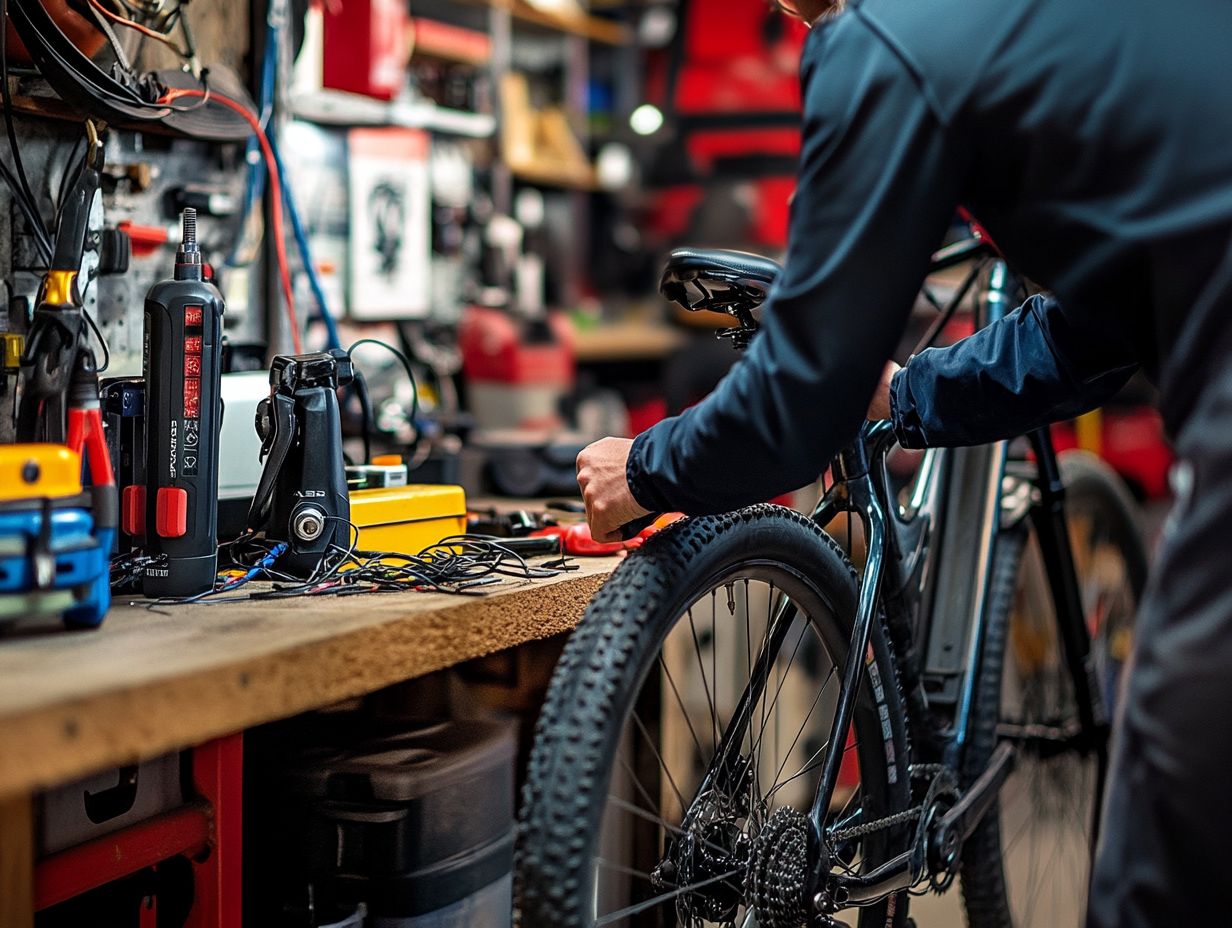
Knowing when to handle repairs on your e-bike and when to call in the pros can significantly influence its performance and lifespan, especially when dealing with complex components like the torque sensor, a device that measures the force used to turn the bike’s wheels.
For instance, tasks like fixing a flat tire or adjusting the brake cables are well within your skill set, making DIY repairs not only feasible but also gratifying. However, it’s important to watch for 5 signs your electric bicycle needs a tune-up, as diagnosing electrical issues or replacing the battery is best left to a qualified technician to avoid potential mishaps.
Regular maintenance such as cleaning the chain and checking tire pressure not only boosts your e-bike’s performance but also enhances safety. These preventive measures are essential for every rider. Being aware of the signs your electric bicycle needs immediate repair can help you find the right balance between self-repair and professional help, ultimately saving you both time and money in the long run.
Preventive Measures to Avoid Costly Repairs
Implementing preventive measures is one of the most effective strategies to avoid costly repairs for your e-bike. By committing to regular maintenance and caring for your battery, you can significantly prolong the lifespan of your electric components and reduce the need for parts replacement.
Tips for Maintaining Your E-Bike’s Condition
To maintain your e-bike’s condition, it’s essential to follow practical maintenance tips that cover everything from proper battery storage to seasonal care for winter and summer.
By adopting these best practices, you can ensure your ride stays in peak condition year-round. For battery storage, keep it at a moderate temperature ideally between 20 C and 25 C while avoiding complete discharges. If you’re curious about what maintenance an electric bicycle needs, remember to store the battery indoors during winter, away from extreme cold, to extend its lifespan.
Make routine inspections of tire pressure and brake functionality a priority, as these factors significantly impact your safety and overall performance. For further insights, learn how to identify electric bicycle performance issues. During summer, take time to clean the drivetrain and lubricate the chain; this simple yet effective maintenance will enhance smooth operation, ensuring each ride remains enjoyable, no matter the season.
Frequently Asked Questions
Start your maintenance routine today to keep your e-bike performing at its best!
How Do I Know If My E-Bike Needs Repairs?
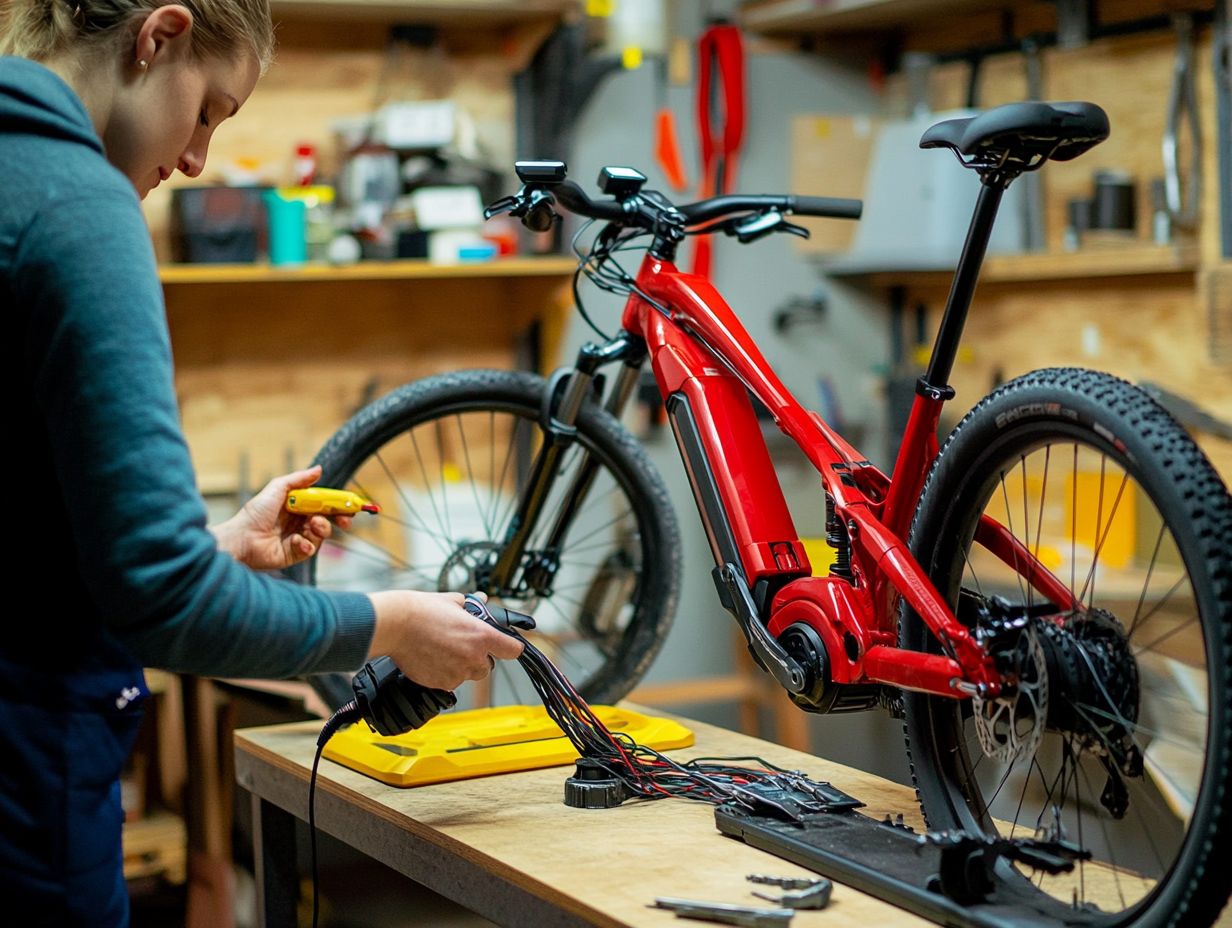
If your electric bike shows any of these signs, it may need repairs:
- Unusual noises or vibrations while riding
- Difficulty accelerating or maintaining speed
- Brakes that aren t working properly
- Significant battery drain or loss of power
- Wheels or tires wobbling or rubbing
- Problems with gear shifting
What Should I Do If I Suspect My E-Bike Needs Repairs?
Address potential issues with your e-bike quickly. This helps prevent further damage.
Take your e-bike to a certified mechanic or contact the manufacturer for repair guidance.
Can I Perform Repairs on My E-Bike Myself?
If you re not a trained mechanic, it s best not to attempt repairs on your e-bike. E-bikes have complex electrical systems, and improper repairs can create safety hazards.
How Often Should I Have My E-Bike Checked?
Having your e-bike checked at least once a year is a good idea. Regular check-ups can catch issues before they turn into major problems.
How to Prevent My E-Bike From Needing Repairs?
Keep your e-bike clean and well-maintained to avoid costly repairs! Monitor your bike’s battery life and avoid overcharging. Be mindful of your riding habits to prevent excessive strain on the motor and brakes.
What Will E-Bike Repairs Cost?
The cost of repairs varies based on the issue and components involved. Get a quote from a professional mechanic or contact the manufacturer for an estimate.

